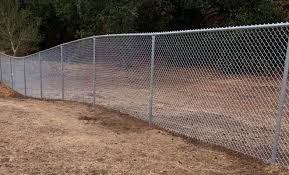Timing can make a big difference in home improvement expenses, and fencing is no exception. If you’re planning a new fence, understanding seasonal fluctuations in fence installation cost can help you save money and avoid delays.
How Seasons Influence Fence Pricing
Several factors cause fence installation prices to rise or fall throughout the year:
1. Spring Rush (March–May)
-
High Demand: Homeowners often tackle outdoor projects in spring.
-
Increased Prices: Contractors raise rates due to packed schedules.
-
Limited Availability: Booking can take weeks or months.
2. Summer Surge (June–August)
-
Continued High Demand: Many people schedule installations during vacations.
-
Labor Shortages: Demand for skilled labor drives up labor costs.
-
Permits Delays: Municipal offices may slow down under workload.
3. Fall Opportunity (September–November)
-
Moderate Demand: Back-to-school season shifts focus away from home projects.
-
Competitive Pricing: Contractors offer deals to fill remaining slots.
-
Ideal Weather: Cooler temps make work easier and materials more stable.
4. Winter Discounts (December–February)
-
Low Demand: Fewer people invest in outdoor projects in cold weather.
-
Lower Costs: Contractors may offer discounts to stay busy.
-
Challenges: Frozen ground and bad weather can delay projects.
Material Availability by Season
-
Spring/Summer: High demand can cause shortages of wood, vinyl, or metal.
-
Fall/Winter: Materials are more available, but custom orders may take longer due to holiday shipping delays.
Best Times to Book for Lowest Fence Installation Cost
-
Late Fall: Prices begin to dip as demand drops.
-
Winter (in mild climates): Labor is cheaper, and scheduling is easier.
Tips to Save Based on Season
-
Get multiple quotes: Especially in peak seasons when price inflation is common.
-
Pre-order materials: Secure material prices before seasonal hikes.
-
Schedule early: Book fall or winter installations in advance.
Year-Round Factors to Consider
Regardless of season, these always impact your fence installation cost:
-
Fence height and material
-
Local permitting fees
-
Topography of the land
-
Customization (gates, lattice, finishes)
Seasonal Case Study Example
Homeowner A installs a wooden privacy fence in:
-
April: $5,800 (high labor demand and material markup)
-
October: $4,950 (off-season rates and discounts)
Savings: $850 just by changing the project timeline.
Conclusion
Understanding how seasons affect the fence installation cost can give you the upper hand in planning and budgeting. If your project isn’t urgent, targeting fall or winter for installation could lead to significant savings.
FAQs
Q1. Is winter really a good time for fence installation? Yes, in areas with mild winters. Prices are lower, and contractor availability is higher.
Q2. Will weather delays cost me more money? Possibly. Delays can lead to extended labor or equipment rental charges. Always ask contractors about weather contingency policies.
Q3. Are permits easier to get during off-season? Not always, but municipal offices are often less busy, which can speed up the process.
Q4. Can I buy materials in winter and install later? Yes. Buying ahead can lock in lower material costs before spring demand surges.
Q5. What is the best overall time to install a fence? Fall typically offers the best balance of weather, availability, and reduced fence installation cost.

